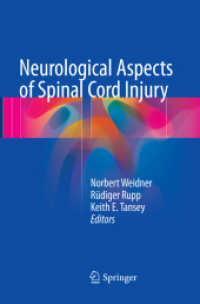Full Description
In Britain in the late nineteenth and early twentieth centuries, universities were one of many institutional state structures wherein gender difference, the male breadwinner ideal, and heterosexuality were central to a conception of citizenship. But while the state could enforce these norms through the parameters it set on the extension franchise or the distribution of welfare benefits, individual women and men also played active roles in creating and renegotiating them through the messy interactions of everyday life.
Teaching Gender immerses the reader in lecture theatres, University Senate meetings, student unions, nightclubs, and halls of residence to show how individuals' efforts to find workable paradigms for relating to one another across gender lines took shape within specific institutional, political, and financial constraints, and in the context of a historical moment when anxiety accrued around non-normative genders and sexualities as symptomatic of wider social and political instability. Drawing on extensive research in the archives of ten colleges and universities across England and Scotland, Samuel Rutherford shows that the nationalization and centralization of higher education at the turn of the twentieth century resulted incidentally in coeducation, over the protest of feminist activists who supported gender segregation; that students' negotiation of cross-gender interaction in coeducational universities ultimately led them to identify heterosexuality as a seemingly less fraught paradigm than more gender-neutral conceptions of 'corporate life'; and that single-sex men's and women's colleges, though increasingly marginal, became important sites for the theorization of life paths and identities outside the heterosexual norm. Through detailed recovery both of political and financial decision-making and of the experiences and emotions of faculty, students, administrators, donors, and national politicians, Rutherford paints a vivid and resonant picture of the university campus as a key site for the transmission of norms around gender and sexuality.
Contents
Introduction
Making The Coeducational University
1: Inventing Higher Education for Women
2: Efficiency, Centralization, and Integration
Gendering The Student
3: 'Corporate Life'
4: Student Masculinities in Public
5: Staging Heterosexuality
LOST CAUSES
6: The Single Woman
7: The Higher Sodomy








